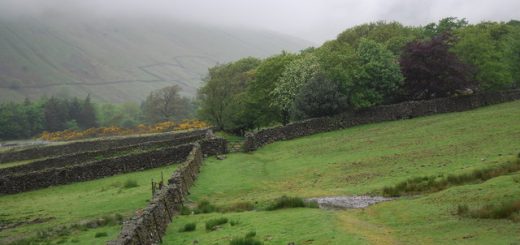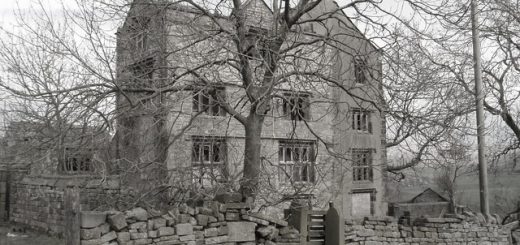Whitby
Whitby is associated with a wealth of traditions and legends. The abbey, now a guant ruin, was built in 651AD and destroyed in a Danish raid in 870AD, it was reconstructed by the Benedictines in the 11th Century. At one time crowds used to gather at the West side of Whitby churchyard, where there was clear view of the North side of the abbey and the highest window. When the sun shone on the window it created an illusion of a woman’s form wrapped in a shroud. This was identified as the ghost of lady (abbess) Hild the founder of the abbey, tradition grew that she also walked the abbey as a phantom. The best time to see this apparition was between 10.00 and 11.00 in the morning. The abbes Hild is also credited with ridding the local hills of snakes by cutting their heads off with her whip. The local ammonites were once identified with these defeated snakes, hence their headless appearance. The ammonites were often used as charm stones and some were even carved with a snake’s head.
![mattbuck (category) [CC BY-SA 2.0 (https://creativecommons.org/licenses/by-sa/2.0) or CC BY-SA 3.0 (https://creativecommons.org/licenses/by-sa/3.0)], from Wikimedia Commons](http://www.mysteriousbritain.co.uk/wp/wp-content/uploads/2008/09/1280px-Whitby_MMB_30-300x187.jpg) The first poet of England is also lived at Whitby in the 7th Century. He was given the gift of poetry after having a vision of an angel.
The first poet of England is also lived at Whitby in the 7th Century. He was given the gift of poetry after having a vision of an angel.
The church was also the scene for a phantom coach and horses that would come thundering up the road , past the church and over the cliffs into the sea. At Fitzsteps a phantom walks with its severed head under its arm, walking a path between Prospect Hill and Ruswarp. A mischievous sprite called hob, which is a generic name for a goblin like creature, is also said to haunt the byways of Whitby.
Whitby is famous for its association with Bram Stoker’s Dracula. Whitby is the location where the doomed ship the Demeter comes ashore, from which Dracula escapes in the form of a huge black dog.
Whitby has also been featured in a few children’s novels by Robin Jarvis, who brings some of the local legends and folklore alive.




Recent Comments